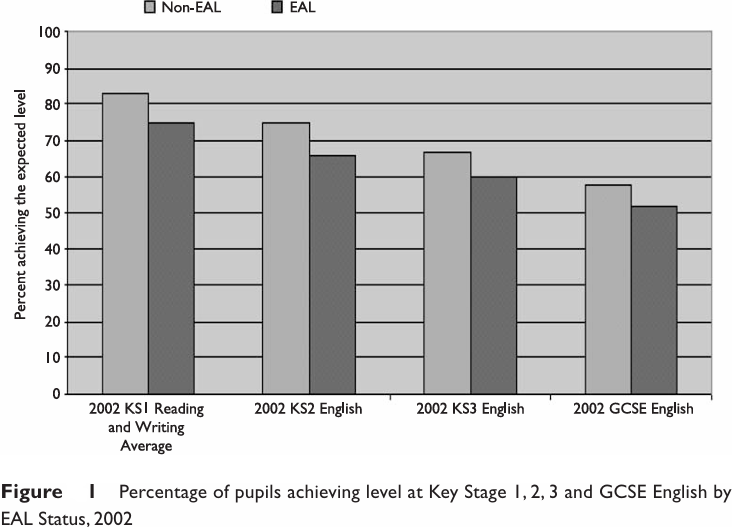


 Grammar
Grammar
 Tenses
Tenses
 Present
Present
 Past
Past
 Future
Future
 Parts Of Speech
Parts Of Speech
 Nouns
Nouns
 Verbs
Verbs
 Adverbs
Adverbs
 Adjectives
Adjectives
 Pronouns
Pronouns
 Pre Position
Pre Position
 Preposition by function
Preposition by function 
 Preposition by construction
Preposition by construction
 Conjunctions
Conjunctions
 Interjections
Interjections
 Grammar Rules
Grammar Rules
 Linguistics
Linguistics
 Semantics
Semantics
 Pragmatics
Pragmatics
 Reading Comprehension
Reading Comprehension| Why do bilingual/EAL learners require additional educational needs at the present time in England? |
|
|
|
Read More
Date: 2025-03-24
Date: 2025-03-28
Date: 2025-03-28
|
Why do bilingual/EAL learners require additional educational needs at the present time in England?
According to the Statistics of Education 2002 there are over 632,000 (approximately 9.3 per cent) learners in schools in England who have English as an Additional Language (EAL). The consultation paper Aiming High: Raising the Achievement of Minority Ethnic Pupils (DfES, 2003a) not only states that this figure reflects a bilingual population that is growing, but also says that there are over 200 languages being used in England, with varying degrees of fluency by pupils. Bhattacharyya et al. (2003) found that 90 per cent of Bangladeshi and Pakistani pupils are registered as EAL learners, 82 per cent of Indian, 75 per cent of Chinese and 65 per cent of Black African. Other legislation and research have alerted the government and educators to statistics that do necessitate whole school action to ensure bilingual learners’ additional educational needs are met. In the Green Paper Every Child Matters (HMSO, 2003), the government says that it will raise the attainment of minority ethnic pupils by: ‘develop(ing) strategies for supporting bilingual learners’ (ibid.: 2.14:28). A further research paper, focusing on the attainments and participation of minority ethnic groups living in England summarizes statistics and research to reach its key findings. Of specific interest to readers, the authors found that:
■ Learners for whom English is an additional language (EAL) perform, on average, less well than pupils whose first language is English.
■ EAL learners generally make better progress between Key Stages.

■ A smaller proportion of EAL learners achieve expected levels at each Key Stage (Figure 1). However, the performance of EAL learners does vary across ethnic groups. (Bhattacharyya et al., 2003)
Further on in Bhattacharyya et al.’s paper they include factors they found that potentially may affect the attainment of certain minority groups: ‘These include lack of English language fluency …, racial abuse or harassment, lack of role models, unfamiliarity with the workings of the education system; teaching based on unfamiliar cultural norms, histories and points of reference’ (2003: 22).
Discussion
How many bilingual/EAL learners are in your educational setting? When a bilingual learner starts at your workplace, do you make inquiries into the learner’s previous educational history, cultural experience and English language fluency or not? Would this information be thought valuable for curriculum planning and assessment?
|
|
|
|
"إنقاص الوزن".. مشروب تقليدي قد يتفوق على حقن "أوزيمبيك"
|
|
|
|
|
|
|
الصين تحقق اختراقا بطائرة مسيرة مزودة بالذكاء الاصطناعي
|
|
|
|
|
|
|
مكتب السيد السيستاني يعزي أهالي الأحساء بوفاة العلامة الشيخ جواد الدندن
|
|
|